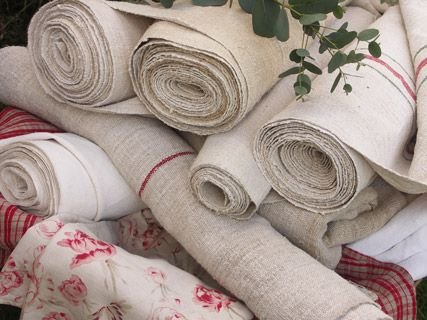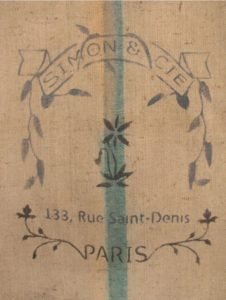
This Article is originally published at Artisans List a Business Listing Website.
Turning a passion into a business is no easy feat, yet when successfully implemented, the result is amazing. Wendy Lewis, owner of Textile Trunk.com , is a consummate collector of Antique European fabrics. She lives in rural Vermont in an old farmhouse with her husband and two children.
Old textiles have a way to warm the soul with their timeless beauty. What I love most is the knowledge that they were once lived with and loved by generations before me. And fortunately for our generation, they’ve aged beautifully. Nothing can create that atmosphere of faded grandeur like the simple passage of time. You can make something look old, but you can never infuse it with a history. There is simply no substitute for a fabric that has had real life pass before it.
HOW DID YOU GET INTERESTED IN ANTIQUE TEXTILES?

I became interested in antique textiles in the early 1990’s. Rather than me finding them, they certainly found me! I was living in England at the time, and would travel to France regularly for vacations, and began gathering little bits of textiles that I found along the way. It was upon discovering a pair of early printed linen panels that I knew I could not escape and that antique textiles would become a very important part of my life, and my family’s. I began researching the history of textiles in Europe extensively in the 1990’s.
WHAT IS THE HISTORY BEHIND THE FABRICS?

I specialize in French printed textiles and some of the most fascinating of these are the wonderful 18thcentury block printed textiles.
France was recognized early on as the leader in design. There were many textile printing centers dotted around France. The best known today was founded by Christophe-Philippe Oberkampf, who operated a mill in Jouy-en-Josas, from 1760 to his death in 1815. The printing process for fabrics in these days were long and very complicated. One of the most widely used was block printing, one of the earliest methods of textile printing. It involved a complicated process of hand carving wooden blocks, one for each color used. The dyeing process was also long and complicated, often taking several months to complete a length of fabric from start to finish!
HOW ARE THE FABRICS BEING USED TODAY?

People are using the textiles that I source in so many wonderful ways! They are using them for upholstery projects, pillows, quilting, framing, curtains, bedding, you name it!~ They also find themselves in spectacular personal and public textile collections.
For more information on Wendy’s textiles, contact her at Textile Trunk.com
This Article is originally published at Artisans List a Business Listing Website.